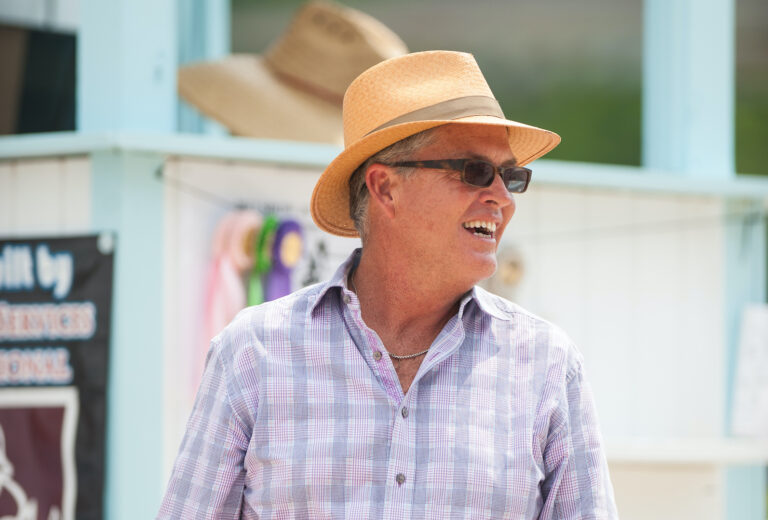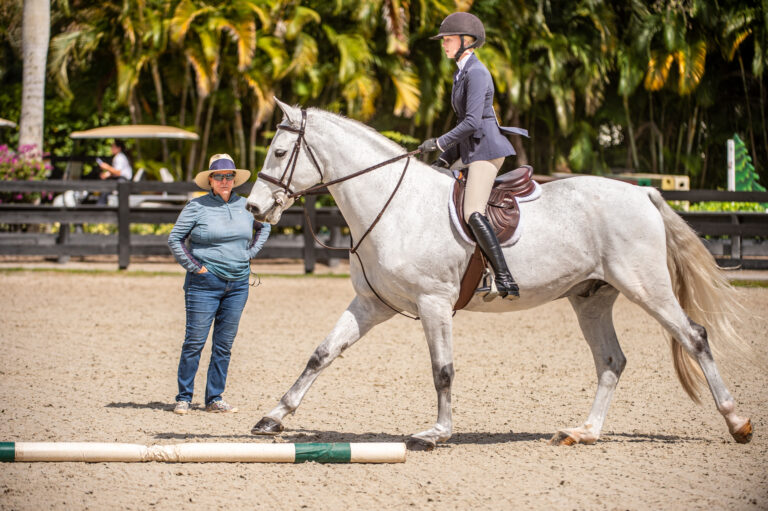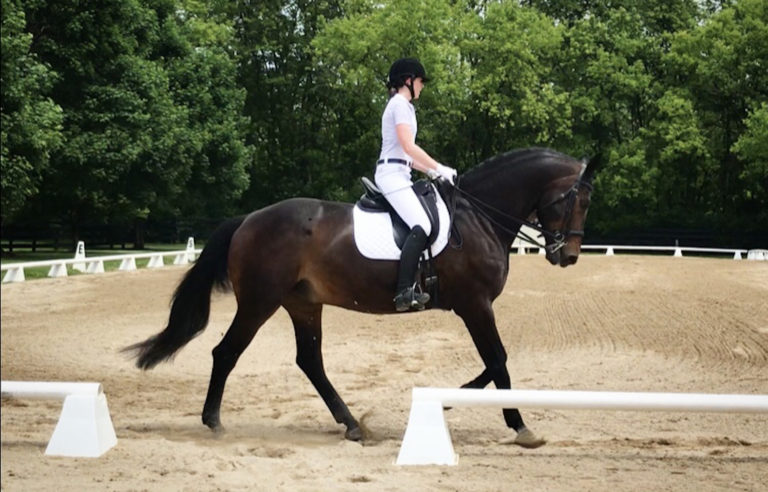Backstage at the Del Mar Arena was a madhouse when Enrique Gonzalez and Eduardo Menezes finished first and third in the Longines FEI World Cup™ Jumping Del Mar qualifier last October. Family members, friends, fans and strangers were happily swept up in the hug-fest following the victories of these partners in E2 Stables, which has locations in San Diego, California, and, as of this year, Wellington, Florida.
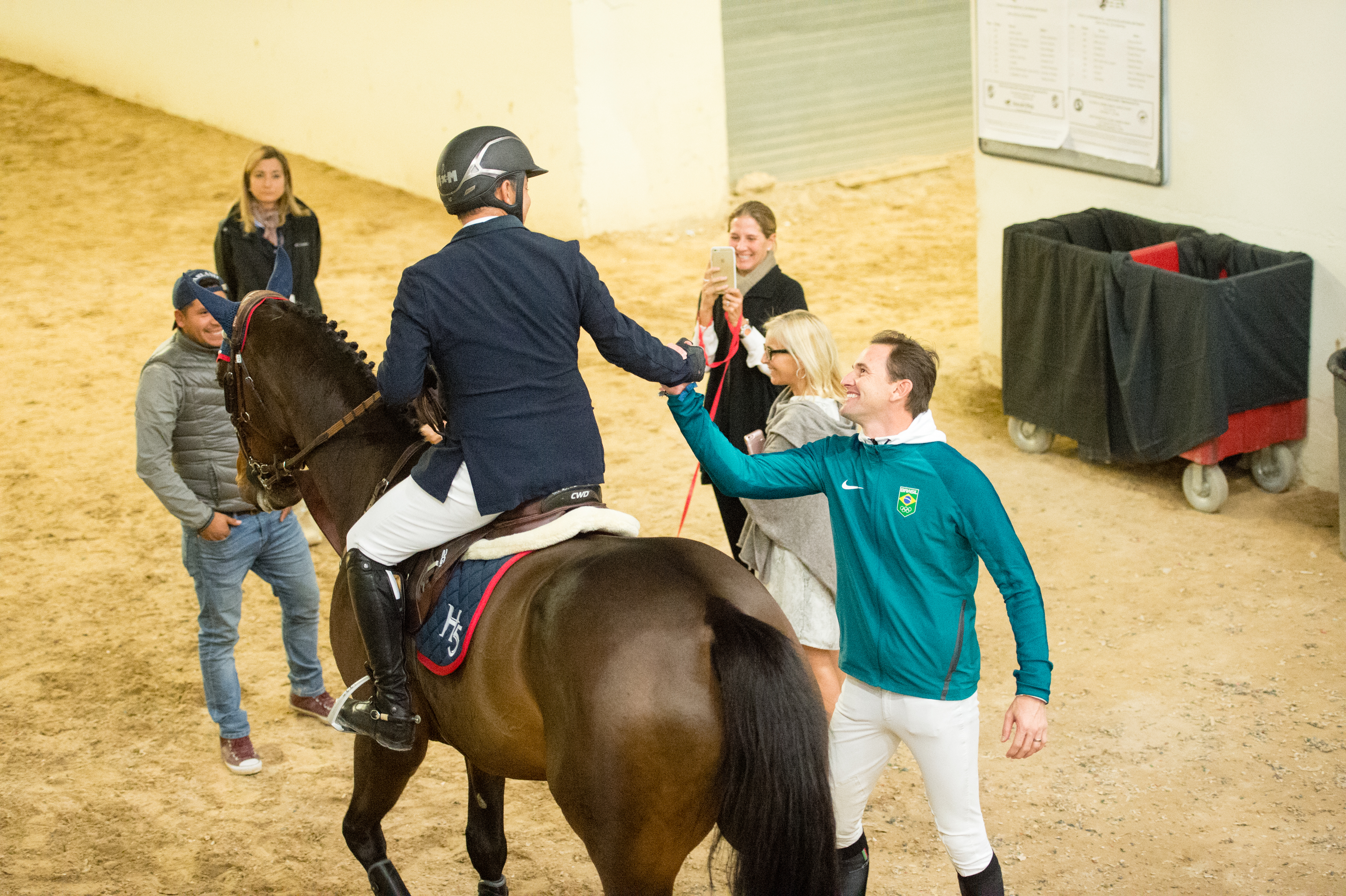
Enrique hails from Mexico, for which he contested the 2008 Olympics, the 2011 Pan Am Games and the 2014 World Equestrian Games. Eduardo is from Brazil, and he was that country’s lead-off rider in show jumping at the 2016 Rio Olympics, where the Brazilians finished fifth. So it couldn’t be called a “hometown win” in Del Mar, California, but the joyous reception to their victories—after an exhilarating jump-off with Frenchman Eric Navet—reflected the high regard in which Enrique and Eduardo are held in the U.S. show-jumping community.
As partners in E2 Stables, 52-year-old Enrique and 36-year-old Eduardo are making their mark in their adopted country and making their home countries proud on the international stage. With an average of 30 to 40 horses in their show program, plus more youngsters in Argentina and Europe, the scope of their business is impressive and one that requires a globe-trotting agenda. Their emphasis is global sporthorse sales and developing successful horse-and-rider partnerships for national- and international-level competition. The results of their efforts range from finding and bringing along one of Meredith Michaels- Beerbaum’s current stars, Comanche, to matching horses with ambitious amateurs around the world.
The partners’ gift for identifying and developing top equine talent is well reflected in their current string of horses, including the coming 10-year-old half-sisters they rode to top spots in the FEI Longines World Cup™ Jumping Western Sub-League by 2016’s close.
By the Mecklenburger sire Chacco-Blue, Enrique’s Chacna earned the World Cup win in Del Mar and a red ribbon in the Longines FEI World Cup™ Jumping Las Vegas qualifier in November plus enough points throughout the season to put Enrique atop that league going into the January 2017 qualifier in Guadalajara, Mexico—at the facility where he ran his business for several years and managed major shows, including Mexico’s national championships. Chacna’s half-sister Catalina meanwhile had earned all of Eduardo’s Longines FEI World Cup™ Jumping points at year’s end, when he was seventh in the Western Sub-League.
Chacna surprised Enrique in being such a successful stand-in for his top horse, Quilebo du Tillard, in 2016, whereas Eduardo’s top horse, Quintol, fulfilled his rider’s early prediction that he’d take him to Rio. The two athletes are different in age and experience, but their types and training trajectories illustrate various aspects of the horsemen’s preferences and practices in identifying and developing young jumpers.
Not an Exact Science
Spotting talent in young horses is not an exact science. “It’s like being a scout for golfers or baseball players,” Enrique says. “It’s a little bit about having a feeling for a horse. I don’t think it’s something you can learn or study.”
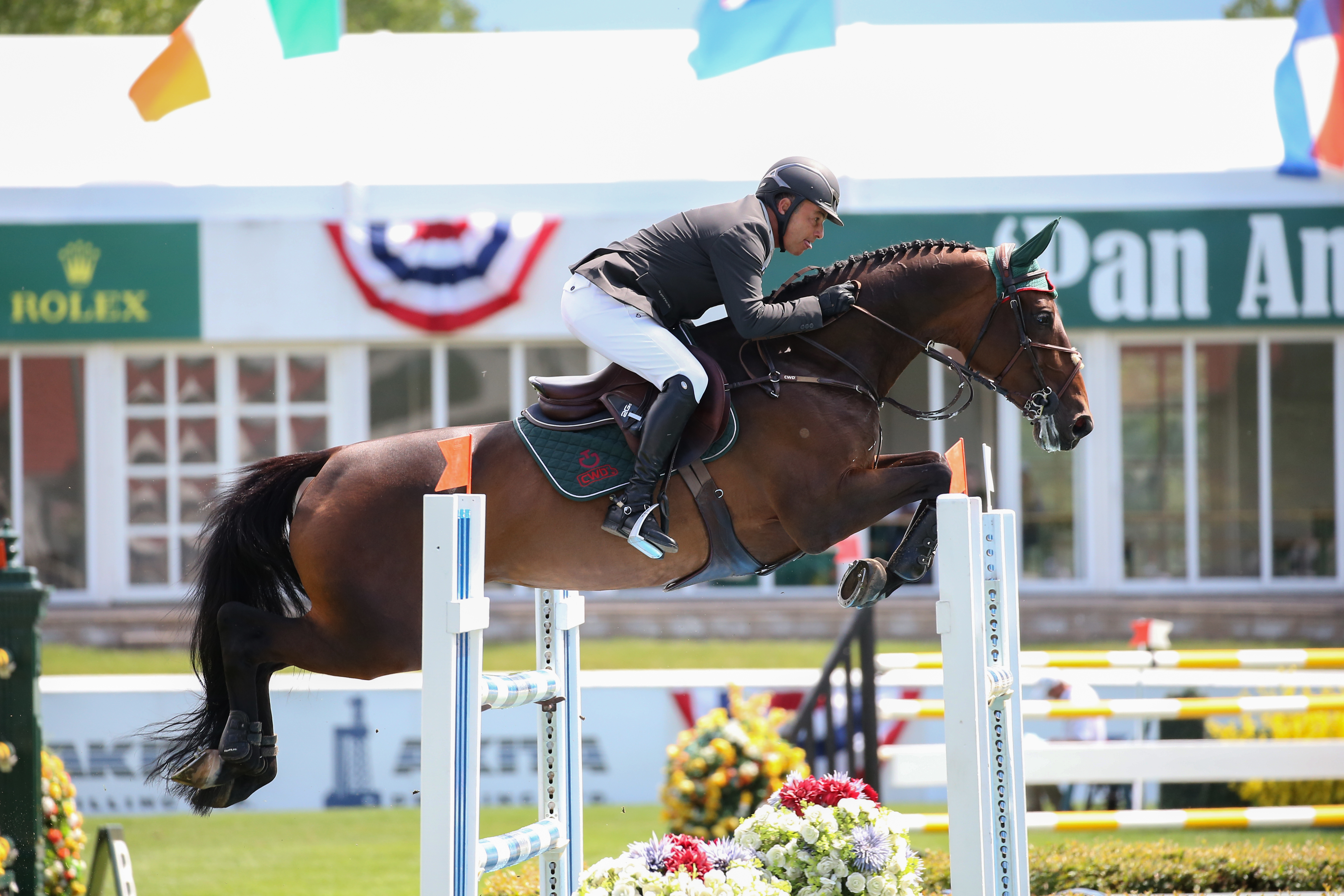
Evaluating conformation, scope and good jumping technique can be learned, he clarifies. “But many times, the young horse you see that has picture-perfect technique is the horse that never makes it to the big sport. Whereas the young horse that might be a little unbalanced or maybe difficult in the mouth—somehow you just know when you ride them. It’s a feeling off the ground: their eye, their attitude when going to the jump. All these things are very important.”
Chacna is a poster girl for just that kind of young horse. “She was complicated,” Enrique says. “Spooky, very strong-headed. The jumping was always there, but she would go around with her neck turning left all the time and jumping in inverted form.” After eliminating veterinary issues as the cause for any of that, Enrique persisted, often with little sense as to whether the effort and time would pay off. “She was like a strong woman: She wanted things to go her way and if you said ‘no’ she would give you a battle.
“I had to let things go her way. There was no chance I was going to win. I brought her flowers every day, took her to the movies, held her hand. One day, she said, ‘OK, now I love you.’ It’s amazing how one day, things just clicked in her head.”

In the show ring that click manifested itself in the fall of 2015. It started with a clear round in a 1.40-meter class at the Del Mar International one week, then in a 1.50-meter class the next. “Riders from the East Coast like Kent Farrington, Beezie Madden and Georgina Bloomberg came and asked me, ‘Who is that horse?’ And I’d been riding her for three years!”
Chacna continued her progress at California’s HITS Thermal into the spring of 2016, then conquered the challenge of Canada’s Spruce Meadows International ring and its distracting decorations that summer. “Sometimes I couldn’t turn her because she was looking at those things so much and wouldn’t get close to them, but by the end of five weeks, she jumped every single day clear in that ring.” A fall season of stellar performances followed.
Fortunately, Chacna’s erratic path is not the norm. More often the hunches Enrique and Eduardo have about young horses pan out in more predictable, steady progress.
Eduardo’s Rio Olympic mount Quintol is the poster boy for that story.
“Connection and chemistry” guide Eduardo in identifying talent in youngsters. “Sometimes you see something that nobody else did or vice versa: maybe a horse that others saw as normal, but you saw a special gift.”
Accentuating the good is another of Eduardo’s tenets. “You need to feel you can develop the horse’s good side, rather than change too much of his bad side. The key is that you see that what you like about that horse is going to be its biggest, best quality at the highest level possible.”
A 12-year-old Oldenburg gelding by Quintender, Quintol is one of many E2 Stables’ horses sourced from legendary German breeder Paul Schockemöhle. Riding Quintol as a 7-year-old, Eduardo sensed the chemistry and connection right away. “I felt something very special. I remember calling Enrique and telling him, ‘I think I just tried the horse that will take me to Rio.’” There were some days that Eduardo questioned that, but on balance, Quintol progressed without major detours, delays or doubts.

Schockemöhle’s program produces approximately 1,000 horses every year, and one result is that they typically get off to a relatively slow start in their training compared to youngsters brought along in a smaller program.
Eduardo likes that. “Sometimes it’s difficult to get a horse that’s already so advanced because some of those little buttons have been put on in a way only the guy who trained him might know. I like to put them on myself.”
Challenging temperaments are rarely a deal-breaker. “We find that often goes hand in hand with quality,” Eduardo notes.
The Perfect Horse Doesn’t Exist
Enrique and Eduardo’s experience with so many young horses gives them a unique perspective on the role veterinary exams play in evaluating prospects. “Talking with other professionals at the Rio Olympics, we guessed that if there was a secret vet check of the 75 show-jumping horses there, 80 percent of them would not pass in terms of having perfect X-rays,” Enrique shares. “But, unfortunately, that part of the vetting process has become a huge issue.
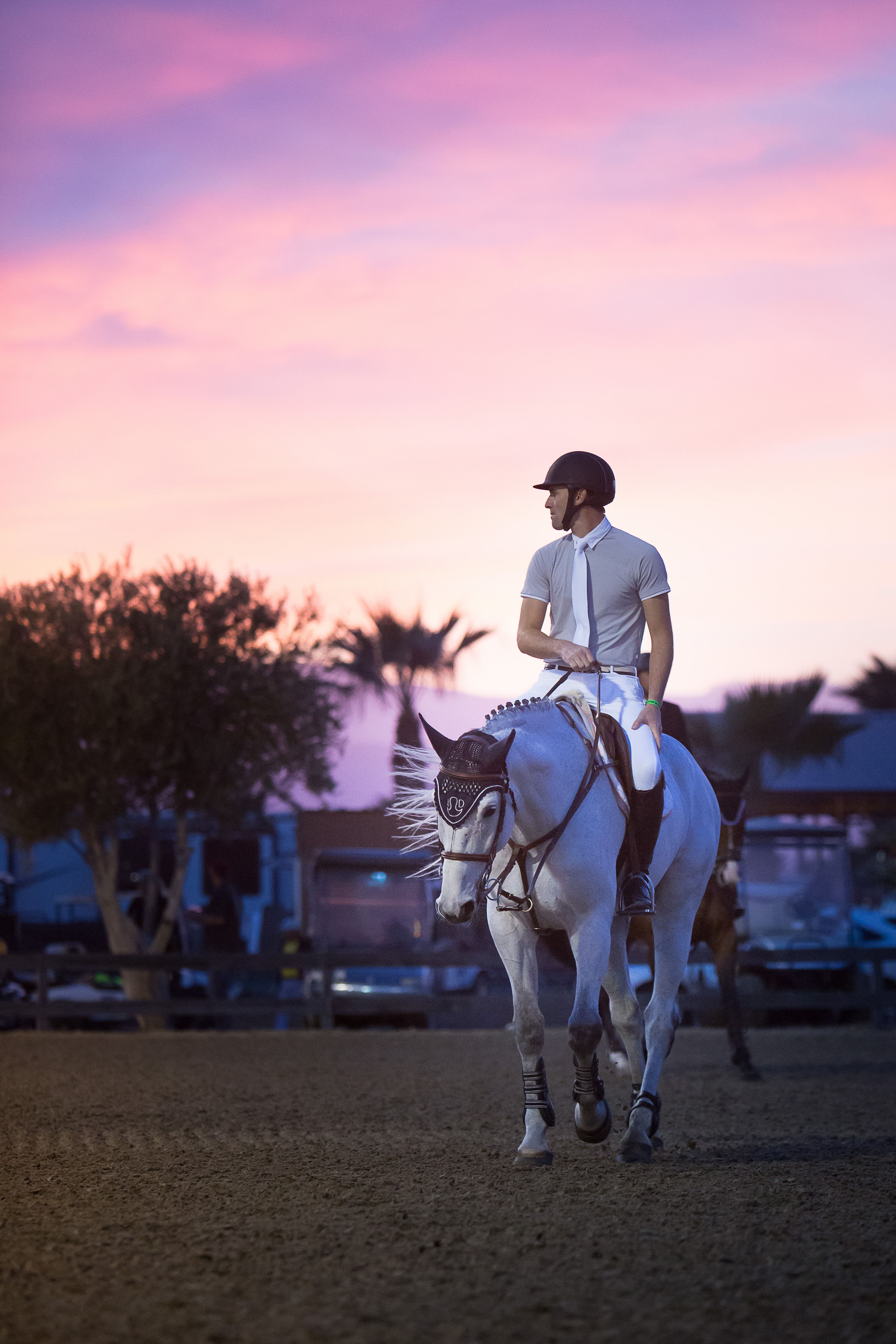
“In picking a horse, you sometimes have to take a little risk here and there with those things,” he continues. “If you want to find a horse with the right jumping qualities and that is considered to have 100 percent perfect X-rays, you are never going to find that horse.” So long as a prospect is clinically sound—trotting in a circle on hard and soft ground and passing a flexion test—Enrique would rather take a good jumper with some imperfections in his X-rays than a horse vetted as “100 percent sound” who lacks heart, carefulness or other less-tangible qualities. “At the top of the sport, you see riders that want the horse they can win the class on, not the horse that’s going to win for the most perfect veterinary records.”
The flexion test should be viewed in context, Enrique adds. “If you do it after four weeks of competition at certain venues, that horse is going to be sore. It can be like asking a person to run two marathons, then putting them through a vet check.”
X-ray imperfections worth accepting include changes in the navicular bone, some roughness at the edges of the fetlock and a bone chip, so long as it’s not inside the joint. Conversely, soft-tissue injuries in a young horse usually prompt a pass.
The partners’ eye for young horses is enhanced by Enrique’s knowledge of sporthorse bloodlines. As president of Mexico’s sporthorse breeding association for eight years, he was instrumental in adding European lines to Mexico’s horses and to developing a now-thriving young- horse program there.
The mare’s critical contribution to the offspring was a key lesson of that experience “You can model a little bit the horse you want from the stallion, but if it’s good, it’s going to be from the mother line,” Enrique says.
In Chacna’s case, her dam’s sire, the Thoroughbred Narew, produces an ideal light-build counterpart for her sire, Chacco-Blue. The power of the pairing is doubly evident in Chacna’s full brother, Chadino, ridden by French show jumper Simon Delestre, who was No. 2 on the World Rankings at year’s end. Both horses are light, fast and careful, qualities that outrank sheer power in today’s super-technical show-jumping tracks, Enrique notes.
Chacco-Blue gets credit for passing on “fantastic minds,” explains Enrique. “They always want to do their jobs and to please you.” Other favorite sires of Enrique include Quilebo du Tillard’s sire, the Selle Français For Pleasure, and Conthargros, registered in the Oldenburg and several other Warmblood registries.
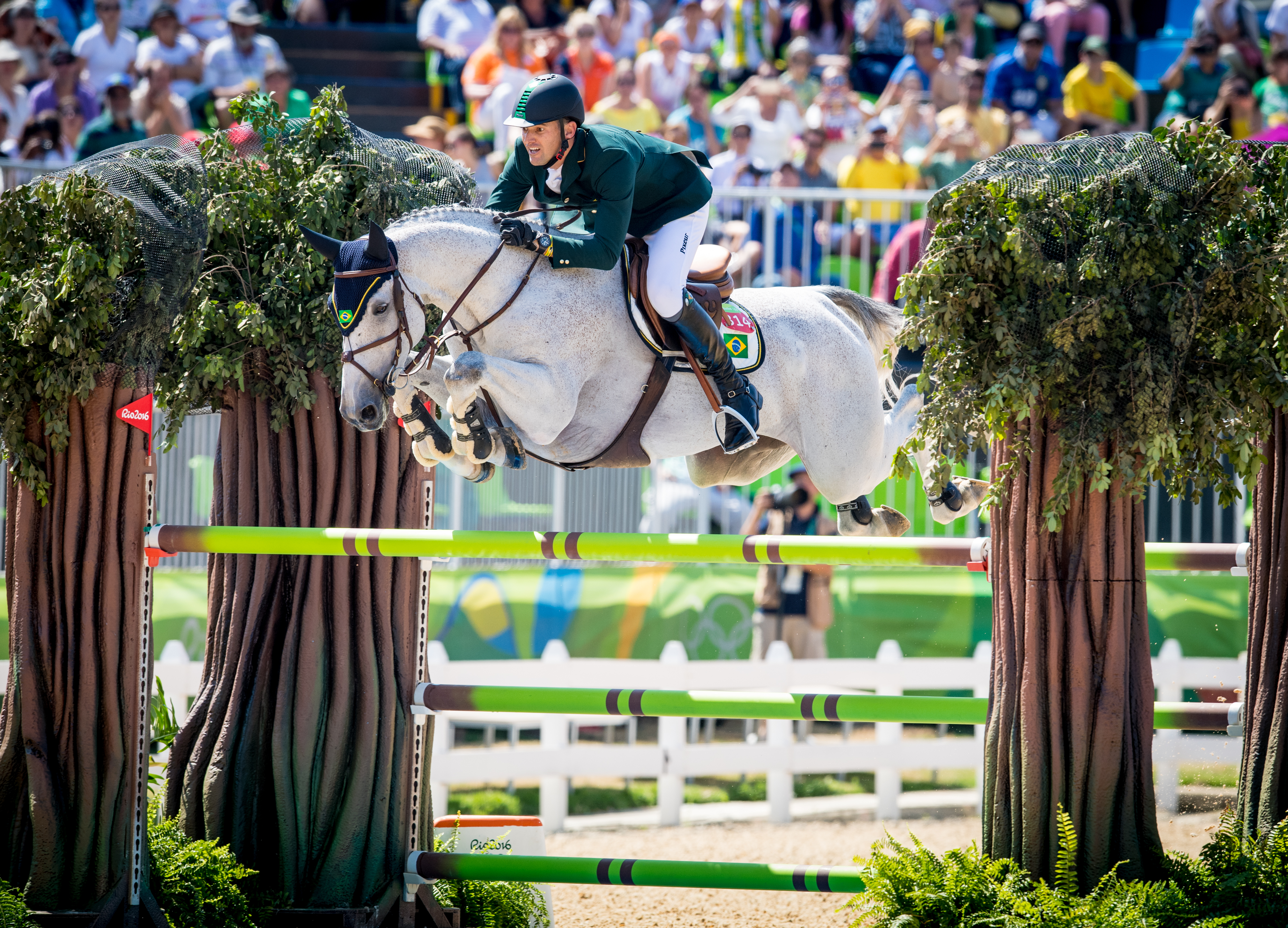
Whatever the horse’s breeding or vet records, realizing his potential all comes down to management. “I think the one secret we have is looking at every horse to go the way it’s best for him, even if it’s not perfect for me or Eduardo as the rider,” Enrique says.
That starts with individualized feed and conditioning programs and continues with adapting the ride to the horse. “When you buy a young horse, you never know which way it’s going to go. It may be a little hotter, stronger or more difficult than you expected, so you have to adapt and work with the horse.”
As top international riders, Enrique and Eduardo are unusual in that they have a significant ownership stake and expense responsibility in the majority of the horses they campaign. Almost all are for sale, even if that means a World Cup™, World Equestrian Games or Olympic dream with that horse is dashed.
The top of the sport is thriving and demand for elite horses is outstripping supply, Eduardo observes. “The good horses are difficult to get and getting more expensive.” With clients ranging from international contenders to amateurs in America, Canada, Brazil, Argentina and elsewhere, the next step to finding good horses is finding the right match of horse and rider. “If you keep true to that, then you have a solid business model as a dealing barn.”
Diverse Backgrounds
The two Es first began working together approximately 15 years ago in Mexico City, where Enrique was well established as an international rider, dealer and coach. Some of his clients maintained vacation homes in Southern California, and Enrique was preparing to take several horses to the California desert circuit for the winter when he broke his leg in a motorcycle accident. “I was late for my sister’s birthday party and I was a little careless,” Enrique explains.
Eduardo, then in his early 20s, had risen up the junior ranks in Brazil, spent two years working for François Mathy in Belgium and was making a name for himself in Europe, Brazil and Mexico. He and Enrique knew each other from shows and a few business dealings before Enrique asked Eduardo to campaign his horses while his leg healed. They’ve worked together for most of the intervening years, formally establishing E2 Stables, first in San Diego, in January 2014.
“It’s a little bit like the chemistry you have with a horse,” says Eduardo of their partnership. “We complement each other and we have a lot of respect for each other.”
They represent diverse personal experience and the collective influence of many of the sport’s best. Enrique claims that he was “never very talented” as a junior, but the opportunities his passion and dedication earned him suggest otherwise. As a junior, he spent six months as a working student for American show jumper Hap Hansen. Later, riding for the Mexican team, he had six years guidance from legendary Brazilian horseman, Nelson Pessoa then Mexico’s chef d’équipe.
Eduardo first rode working cattle horses on his family’s ranch, then was exposed to and tutored in English disciplines through a family friend in the military. The Pessoas influenced him heavily, too, as Nelson and his son, six-time Olympian Rodrigo, were inspirations as he grew up riding in Brazil.
Since first riding for the Brazilian national team in 2013, Eduardo has had several chances to work with Rodrigo, “who has always been very generous and nice to me.”
In Rio this year, Eduardo rode with another show-jumping legend, American George Morris, Brazil’s 2016 chef d’équipe. “It was a pleasure to do the whole Olympic process with him,” Eduardo says of George. “He’s a very experienced and smart guy. He doesn’t try to change your riding, but he knew what and when to say things so that we went into the ring feeling we were the best and had the biggest chance to win.”
Of the Olympic experience in his home country and on a horse he’d predicted to ride there five years prior, Eduardo says he felt much more proud and excited than nervous—even riding first for Brazil, which drew the number-one slot, making him the first to tackle the Olympic track.
“The crowd was amazing. It didn’t feel like an equestrian sport crowd, it felt more like a Super Bowl crowd. It really helped me focus and, like the rest of our team, Quintol and I were on our game.”
Eduardo describes Quintol as “super strong and the healthiest horse in the barn.” As such, Tokyo in 2020 is a realistic goal if “he’s still in our stable.” That caveat always looms for Enrique and Eduardo, whose only fault might be being a little too good at their jobs.
E2: Bicoastal and Global
E2 Stables, not to be confused with Katherine Gallagher and M. Michael Meller’s E2 Show Jumpers in Wellington, Florida, is everywhere. With the backing of their major sponsors, the Hank family of Mexico, Enrique Gonzalez and Eduardo Menezes have stables in show-jumping hubs on both coasts: San Diego and Wellington. As of the winter, Enrique and Eduardo planned to be mostly based in Wellington. Enrique is set on the Longines FEI World Cup™ Jumping Final in Omaha, Nebraska, March 29–April 2, and he hoped to have his top star, 11-year-old Quilebo du Tillard, fully back from a 2015 injury in time for the Longines FEI World Cup™ Jumping Wellington qualifier at the Wellington Masters in February.
Eduardo may target the Final depending on whether that conflicts with the beginning of his second full season on the Longines Global Champions Tour. If the Omaha option materializes, Eduardo plans to take Quintol, giving Catalina more time to mature and gain mileage. Along with the three riders in the Hank family, Eduardo and Enrique work with a few other clients, most of whom own multiple horses. The rest of the typically 30 to 40 steeds in their charge are sales prospects in various stages of development, most of whom they own alone or in partnership with the Hanks, Paul Schockemöhle and a few others. Some they are representing for outside owners.
Coaching has its place in E2 Stables, too. Their main students are 16-year-old Carlos Hank Jr., and Enrique’s stepson, 18-year-old Cristobal Collado.
Carlos was junior individual gold medalist at last summer’s North American Junior and Young Rider Championships in Colorado. The four-year plan for him is going after a 2020 Olympic berth representing Mexico. It’s an ambitious plan, Enrique and Eduardo acknowledge, especially with the new rules limiting Olympic squads to three horse/rider pairs instead of four. Yet it fits with a young-rider development campaign the partners have been part of for several years. Called MXM (“Montando for Mexico – Riding for Mexico”) and guided and funded by Carlos Hank Sr., the program provides coaching, funds and sometimes horses to help young Mexican riders gain international experience.
Enrique’s stepson Cristobal will finish his last year of high school via home schooling and will help with the E2 horses this winter in Florida. He recently entered the U.S. Equestrian Federation’s U25 Developing Rider division and is especially effective at campaigning horses suited for amateurs. “They sell better than the ones we ride!” Enrique says.
This article was originally published in the March 2017 issue of Practical Horseman.






